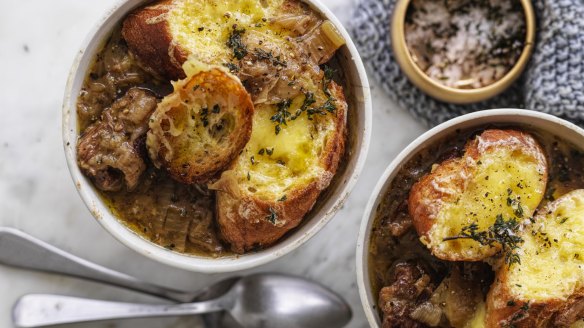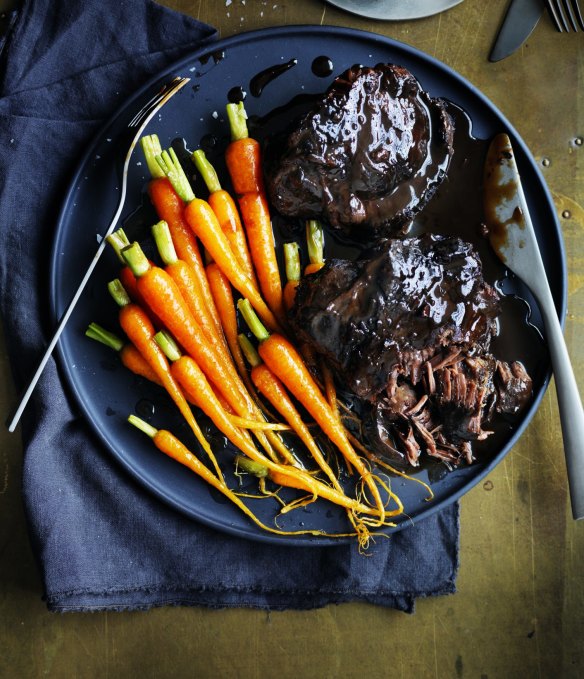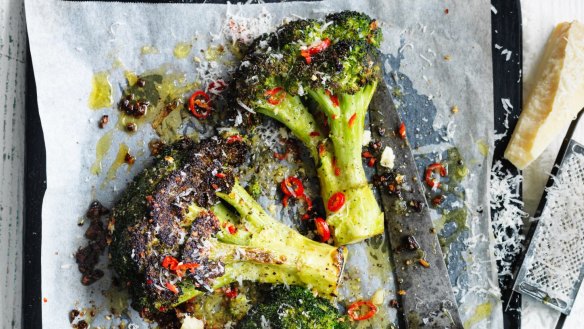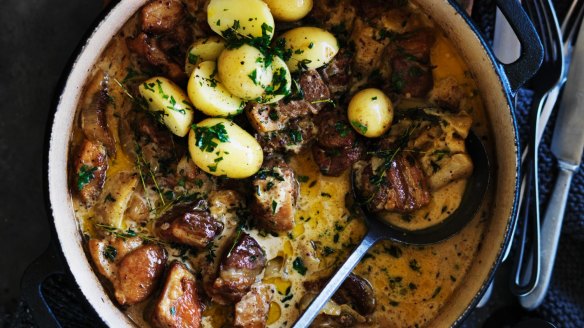Adam Liaw's dos and don'ts for winter cooking

QUARANTINE COOKING
We're coming out of our cage and we're doing just fine. Now that restrictions are starting to ease and we're warily dipping our toes into the "new normal" I think a lot of us have looked at the calendar and thought, "Bloody hell! It's winter already."
Winter cooking is a bit different from the breezy freshness of summer, so here are some dos and don'ts for your winter kitchen.
Do make room in the freezer
Slow-braising is a great idea for winter, but if you're going to be cooking something for a long time, it's both labour and energy efficient to make more than just one meal. Slow-braised foods generally freeze well, so double or triple the recipe and make sure you've got some room in the freezer.

Don't just buy chuck
Chuck steak makes a great stew, but it's not the only game in town. For stewing think ossobuco, beef cheeks, brisket, lamb mince, lamb shanks, pork ribs, pork knuckle, pork belly, beans, lentils, chicken drumsticks, whole chickens, duck, octopus… there's a lot more that can go into the pot than just chuck.
Don't only cook heavy meals

Winter doesn't just mean big, rich meals at every occasion. You know what's like a stew but light? Soup. Soup is delicious and we don't give it nearly enough credit. We should stop treating soup like it's an entree. It's an excellent fast, light and nutritious meal in its own right. Pair it with a cheese toastie if you want something a bit heartier.
Do make stock
Stock is vital to the winter kitchen. Aside from chicken and beef bones and meat trimmings, winter vegetable offcuts make excellent stocks. Fish frames and prawn shells, too. A lot of the stuff that goes into your bin would probably be better off in a stockpot instead. It's dead simple to do, will make your food taste better and save you a lot of money on packaged stock as well.

Don't eat out of season
Don't be the irate shopper at my local greengrocer who was giving the cashier an earful because peaches were too expensive. It's June. If you're eating peaches they came from the other side of the planet. Try winter citrus instead, or quinces and apples that cropped in autumn. On the vegetable side you've got broccoli, cauliflower, brussels sprouts, cabbage, leafy greens, fennel, sweet potato etc. Leave the stonefruit and fresh berries for summer.
Do use a heavy pot
A heavy cast iron pot will improve your winter cooking. There are lots of different brands and they're not always pricey. Cast iron over low flame is about even heat, but not in the way most people think. The conducted, contact heat of cast iron for frying is actually quite uneven because it is a poor conductor and so the heat from the flame can create hotspots. The big difference, however, is emissivity.
Cast iron is heavy and has higher emissivity than stainless steel or aluminium, which means that even though it takes a while to heat up, when it's hot the pot radiates infrared heat – like cooking over charcoal does. Over low heat and over a long time, this means that the overall heat in your pot (both conducted by the flame and radiated by the pot) is more even because it cooks with heat radiated from the bottom, sides and even the top. This makes a big different to braises and stews. No heavy pot? Cook your stew in the oven instead.
Do start it right
For stews, what you do at the beginning can make all the difference. The aromatic vegetable flavour base – mirepoix, sofrito or rempah – you start with should be cooked for at least 10 minutes. Meats need to be well browned (do it in batches so you don't overload the pot). Doing these initial steps properly will greatly improve the result after all those hours of braising.
Don't eat it straight away
Slow-cooked dishes take time. The great thing about stews is the complexity and depth of flavour you can get by allowing flavour molecules to interact for a long time, and at varying temperatures. You know how a curry or stew tastes even better the next day? That's because the flavour has developed not just at cooking temperature, but also at a lower temperature after it has cooled down. If you have the time to plan ahead, don't plan for a stew to be ready just as you're sitting down to eat. Plan for it to be ready a few hours before. Let it cool and then reheat it to serve. It will taste a LOT better.
Do think quick
Not all stewed dishes take hours. Thai curries, French soups and Italian fish stews are very quick to make. Japanese nimono can be ready in minutes, and is a hearty meal that's also light enough not to make you feel heavy. Hotpot-style dishes from China, Japan and Korea are so quick you literally cook them at the table. Winter cooking doesn't always mean spending hours in the kitchen.
